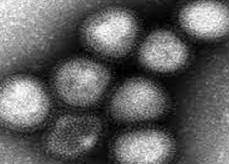
H7N9 believed capable of human-to-human transmission
Say virus can also be spread by airborne droplets.
Chinese and American scientists said the H7N9 bird flu virus can be transmitted between mammals via direct contact and by airborne droplets. The virus might be capable of spreading from person to person,.
A study published in the journal Science and presented at a briefing in Hong Kong last Friday found laboratory experiments on animals showing the possibility this virus can evolve further to form the basis of a future pandemic threat.
The World Health Organization said the findings from the study were useful but warned that people have to be very careful about what's happening on the ground.
WHO said it has already seen a few limited instances of human-to-human transmission within close family range, within close contacts, so this is another piece of the puzzle.
The findings come after WHO said the H7N9 virus appeared to have been brought under control in China thanks to restrictions at bird markets.
The H7N9 virus is known to have infected 131 people in mainland China and one in Taiwan since February, but no new cases have been detected since early May.






















 Advertise
Advertise







